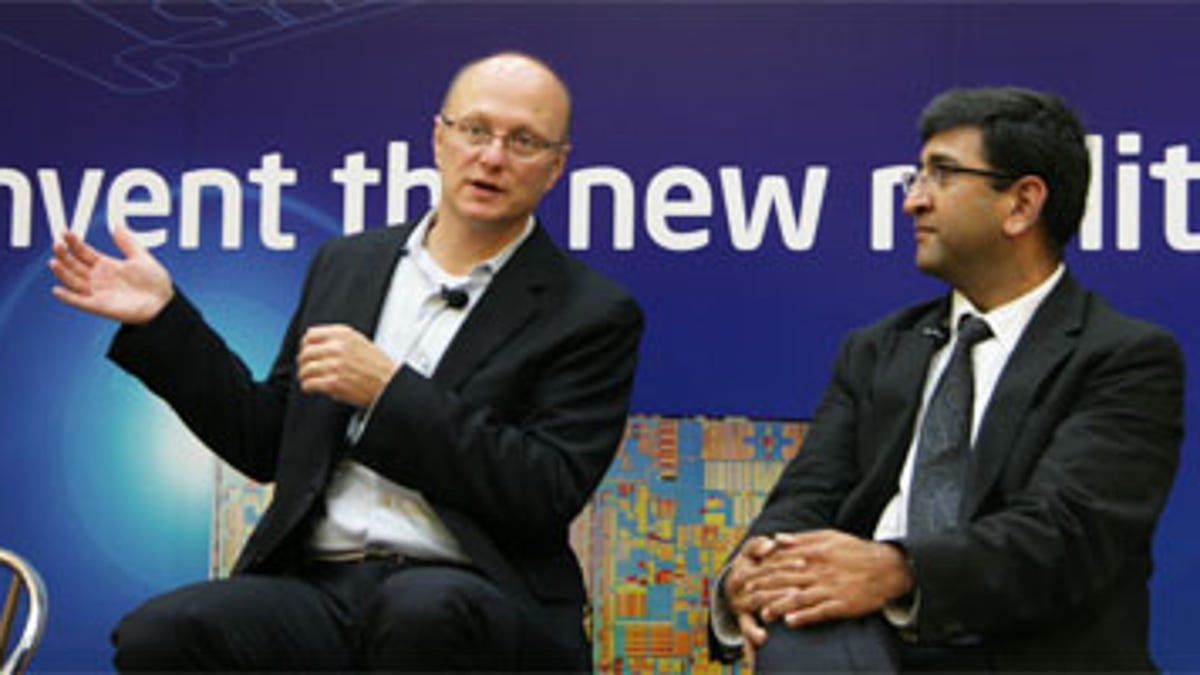Intel blasts iPhone; Apple honeymoon over
A once-torrid relationship between Apple and Intel has dissolved into name-calling and finger-pointing over the iPhone's Internet-surfing ability.

Intel's romance with Apple appears to have gone sour.
Company executives have decided to start including the iPhone as one of their prime examples of smartphones that don't run "the full Internet" because they don't use an Intel chip, according to a report out of the Intel Developer Forum in Taipei from our friends down under at ZDNet Australia. This specious argument--that ARM-based chips aren't man enough to run the Internet--is nothing new from Intel, but the decision to highlight the iPhone as part of that argument is.
Intel has been trying to wedge its way into future mobile computers by taking on ARM, which designs cores that power more than 90 percent of all mobile phones in the world. Its argument is that since the PC-based Internet experience is run by Intel's x86 architecture, that's the only possible solution for future sophisticated mobile computers.
But as Engadget points out, say what you will about the iPhone, but few people complain about its inability to run "the full Internet." The most frequent criticism of the iPhone's Internet-running ability is probably that it can't play Flash content, but that has more to do with Apple CEO Steve Jobs' belief that Adobe's Flash Lite isn't good enough for the iPhone than any technical limitations on the part of the ARM processor. In fact, Adobe is believed to have a Flash player for the iPhone all ready to go if and when Apple decides to approve its inclusion on the iPhone.
When it first broached this argument last year, Intel refused to publicly identify specific smartphones it used to produce a PowerPoint slide for an IDF keynote damning ARM-based smartphones as error-prone when browsing the Internet, saying it didn't want to embarrass anyone. At the time, it probably thought that it could one day win Apple over to its side when the Moorestown chip arrived, and it was still smitten with its hot new paramour that made old lovers Dell and HP look impossibly lame.
But Apple decided not to wait for Intel, doubling down with its bet on the ARM architecture by snapping up chip design firm P.A. Semi and putting them to work on future CPUs based on the ARM architecture for the iPhone and iPod Touch. It then took the further step of dumping Intel's integrated graphics chipsets from the MacBook, highlighting (once again) just how far Intel has to go to make a competitive graphics chipset.
And so, suddenly the iPhone is a prime example of a smartphone that just doesn't have what it takes, according to Intel's Shane Wall. "Any sort of application that requires any horsepower at all and the iPhone struggles," he said.
The thing is, developers, customers, and carriers don't seem too bothered. As The Inquirer's Paul Hales observes, "ARM has chips in over a billion mobile internet devices and Intel's are in, ooh, half a dozen or so."
Hell hath no fury like a chipmaker scorned.